Orthotics
Foot orthotics: Align & Support your Foot and Lower Limb
Tired of sore feet or aching legs? Foot orthotics are custom-made to support your arches, correct imbalances, and bring your whole lower body back into natural alignment, so you can move freely and comfortably again.
Custom foot orthotics are used to treat a wide variety of conditions. They are designed to re-align the position of the foot and to elevate the pressure and stress of the joints, muscles, and ligaments of the foot and lower limb. Each orthotic is custom designed at Total Foot & Ankle Clinic to the patient’s specifications according to their biomechanical assessment results and findings.
Total Foot & Ankle Clinic: Orthotic Care You Can Trust
Total Foot & Ankle Clinic uses the latest technology of 3D scanning and design to manufacture your custom foot orthotics. Each orthotics is designed by the podiatrist and approved prior to manufacturing. The treating podiatrist oversees the entire process for the best possible outcomes. The custom foot orthotics are either made of nylon or EVA with a life of 3-4 years. This will ensure you get the best use out of your orthotics before they need replacing or adjusting. There are many different styles and designs of orthotics that meet patients’ needs.


- Flat feet (Pronation)
- Nerve entrapment
- Ankle instability
- Leg length difference
- Heel and Achilles pain
- Knee pain
- Morton's neuroma
- In-toeing
- Abnormal Gait Patterns
- Muscle overuse (shin splints)
- Much more
Struggling with Stability: How Ankle-Foot Orthotics Can Help
Ankle-Foot Orthotics (AFO’s) are custom-made medical devices designed to support, align, and improve the function of the ankle and foot.
They are used to treat:
- Drop Foot
- Gross pronation
- Ankle fusions or OA
- Multiple sclerosis affecting the lower limb
- Spina Bifida affecting the lower limb
- Neurological disorders affecting the lower limb
- Lower back nerve impingement affecting the lower limb
- Muscular dystrophy and Weakness affecting the lower limb
Who Can Benefit from Ankle Foot Orthotics?
- Children with cerebral palsy
- Adults with stroke, multiple sclerosis, or muscular dystrophy
- Seniors with mobility issues
- Athletes recovering from injury
How EOS Imaging Helps Your Health
EOS imaging is a low-dose, weight-bearing X-ray technology. It can simultaneously take full-body, frontal and lateral (side view) images of the skeletal system of a patient in a standing or sitting position, using significantly less radiation than traditional X-rays or CT scans. A typical EOS scan at HSS has a radiation dose equivalent to about one-third that of the dose of a conventional X-ray of the same body parts.
The results give you a detailed picture and measurements of the patient’s lower limb, pelvic angles, spine position, and leg length. The scan is bulk-billed on Medicare.
EOS imaging is available to patients in areas near North Parramatta, Bankstown, Westmead, and Merrylands, offering convenient access to advanced, low-dose imaging and support for orthotic care.
EOS imaging is invaluable for evaluating the following conditions:
- Scoliosis
- Kyphosis
- Limb length discrepancy
- Balance and posture complications
- Hip dysplasia
- Bowleg and knock-knee conditions
- Lower back nerve impingement affecting the lower limb
- Muscular dystrophy and weakness affecting the lower limb


Foot Orthotics: Support for your balance & comfort
- Foot orthotics do more than support your feet - they support your whole body with every step.
- By improving how your feet move, orthotics reduce stress on your ankles, knees, hips, and lower back.
- Whether it’s flat feet, heel pain, or alignment issues, custom orthotics target the root cause, not just the symptoms.
- Ready for lasting relief? Book your custom foot orthotic consultation with Total Foot & Ankle Clinic today.
- Our podiatry clinics in Parramatta and Greenacre are here to help you take confident, pain-free steps with expert foot care tailored to your needs.
- We’re just a call away at 02 9635 8739, so let’s get you stepping comfortably again!
Case Study
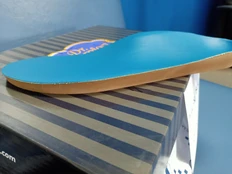
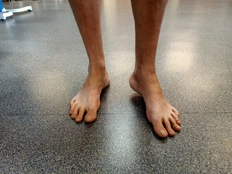
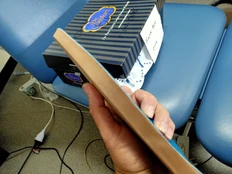

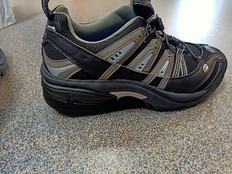
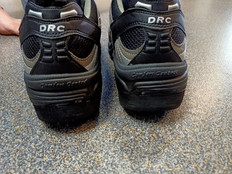
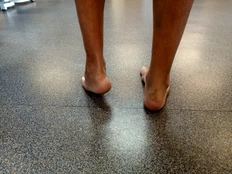
Jay attended the clinic for complications that arose from a work place injury. The patient has a left foot ankle injury after falling from a platform, damage to the ankle joint. The patient underwent ankle fusion which caused his foot to remain in a plantarflexed position (downward fixed position). The patient developed pain in his left ankle, knee, hip and lower back. His following findings for the assessment (simplified) were:
- No left heel contact when walking.
- Bouncy gait and Unstable Gait.
- Sore Left ankle, knee, hip and lower back.
- No range of motion left ankle.
- Left foot supinated position.
- Functional Leg Length caused by heel lift.
- The heel was fixed not making contact with the ground.
Treatment consisted of custom orthotics with forefoot valgus posting and modified footwear for compensate for the lateral stride and heel raise. Allowed to compensate and the patient to walk with a normal gait.

